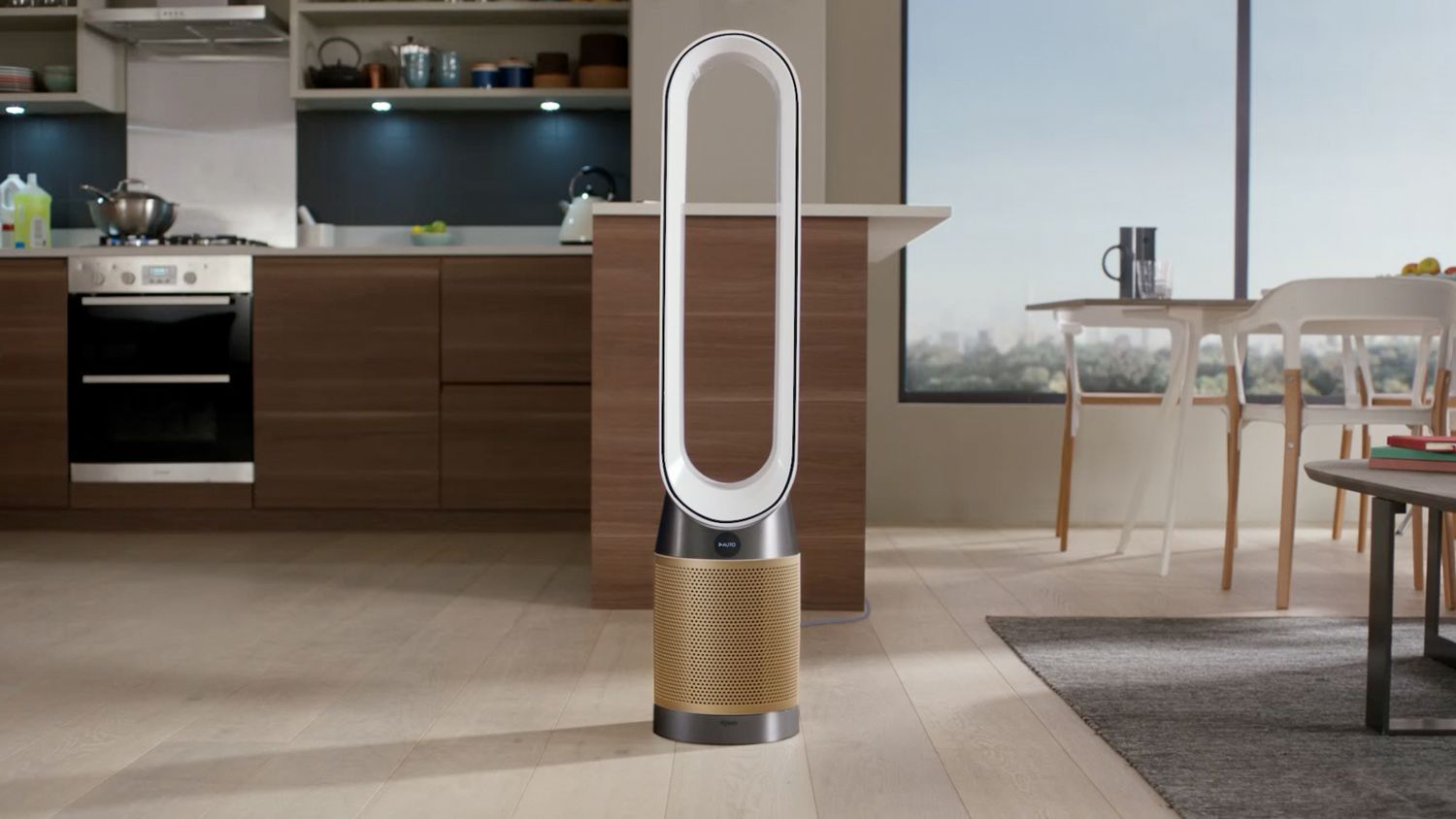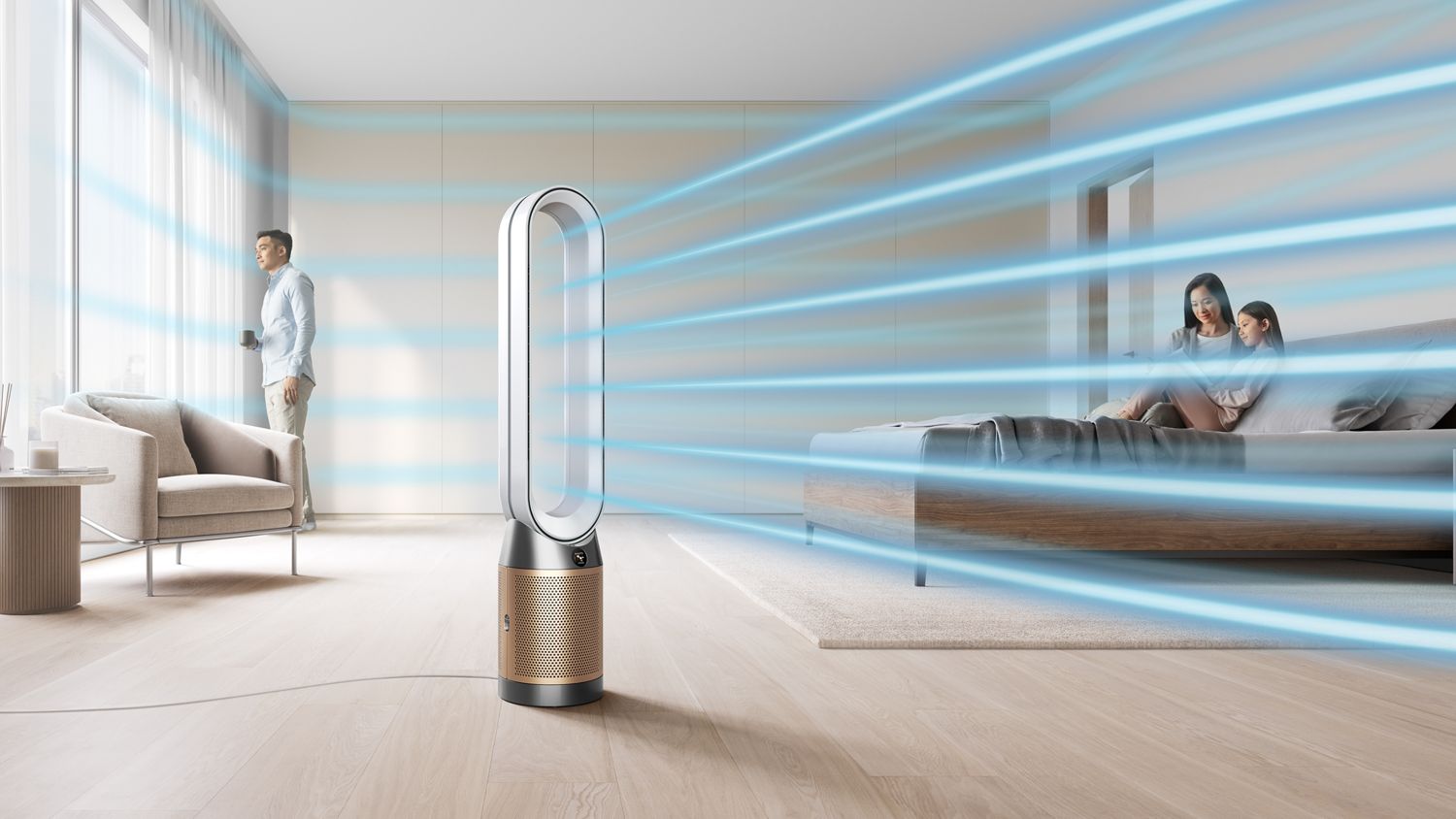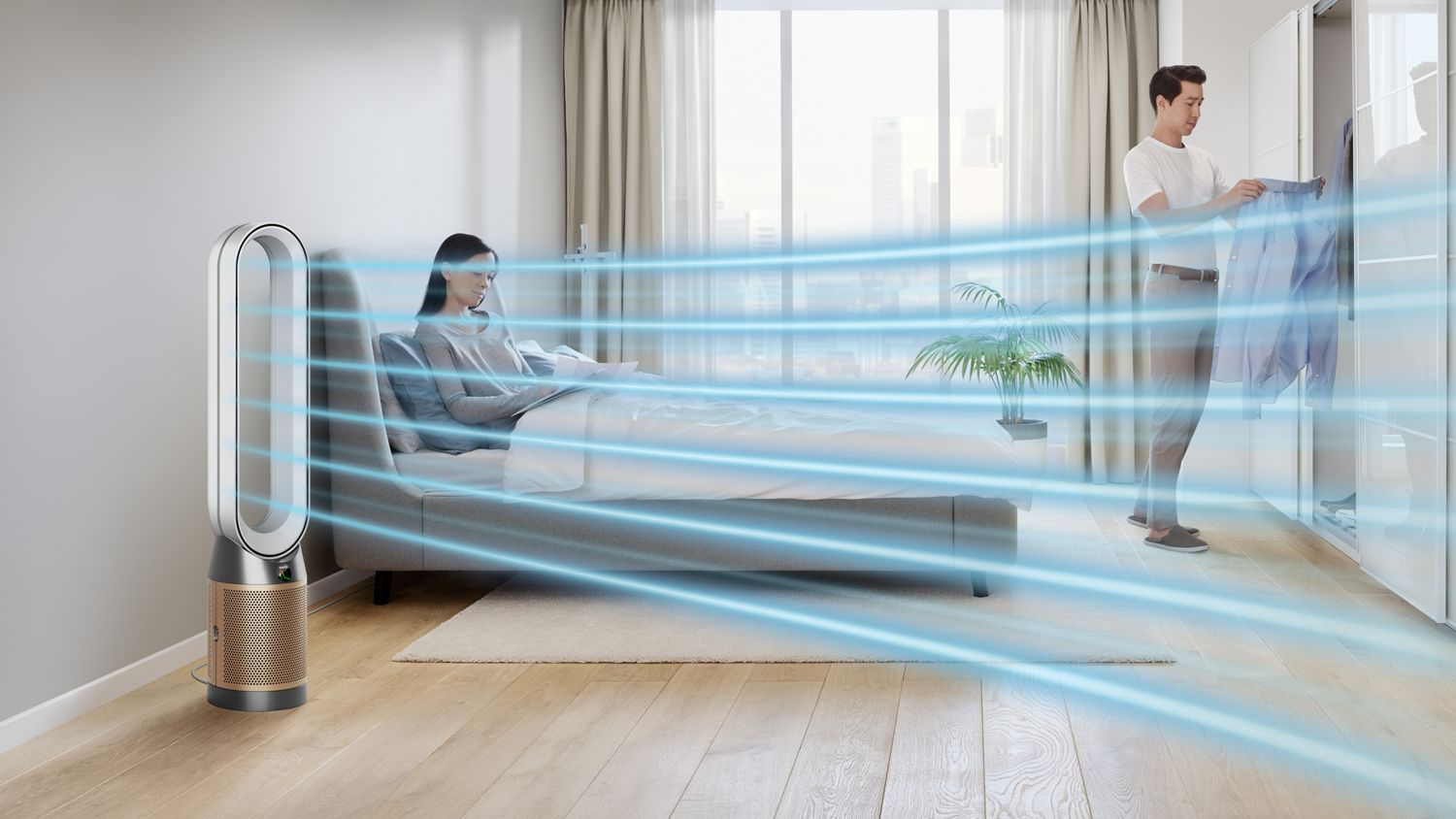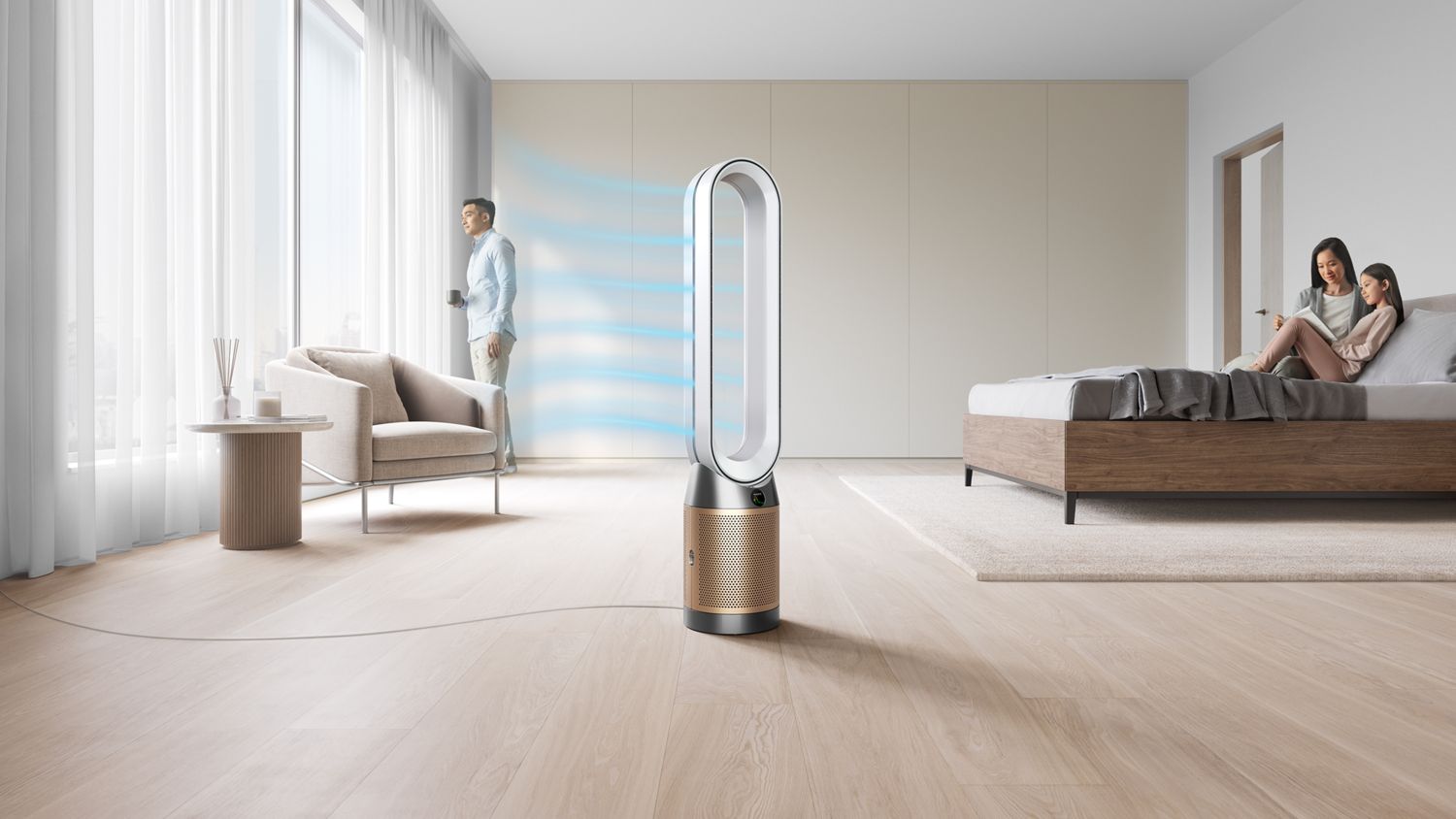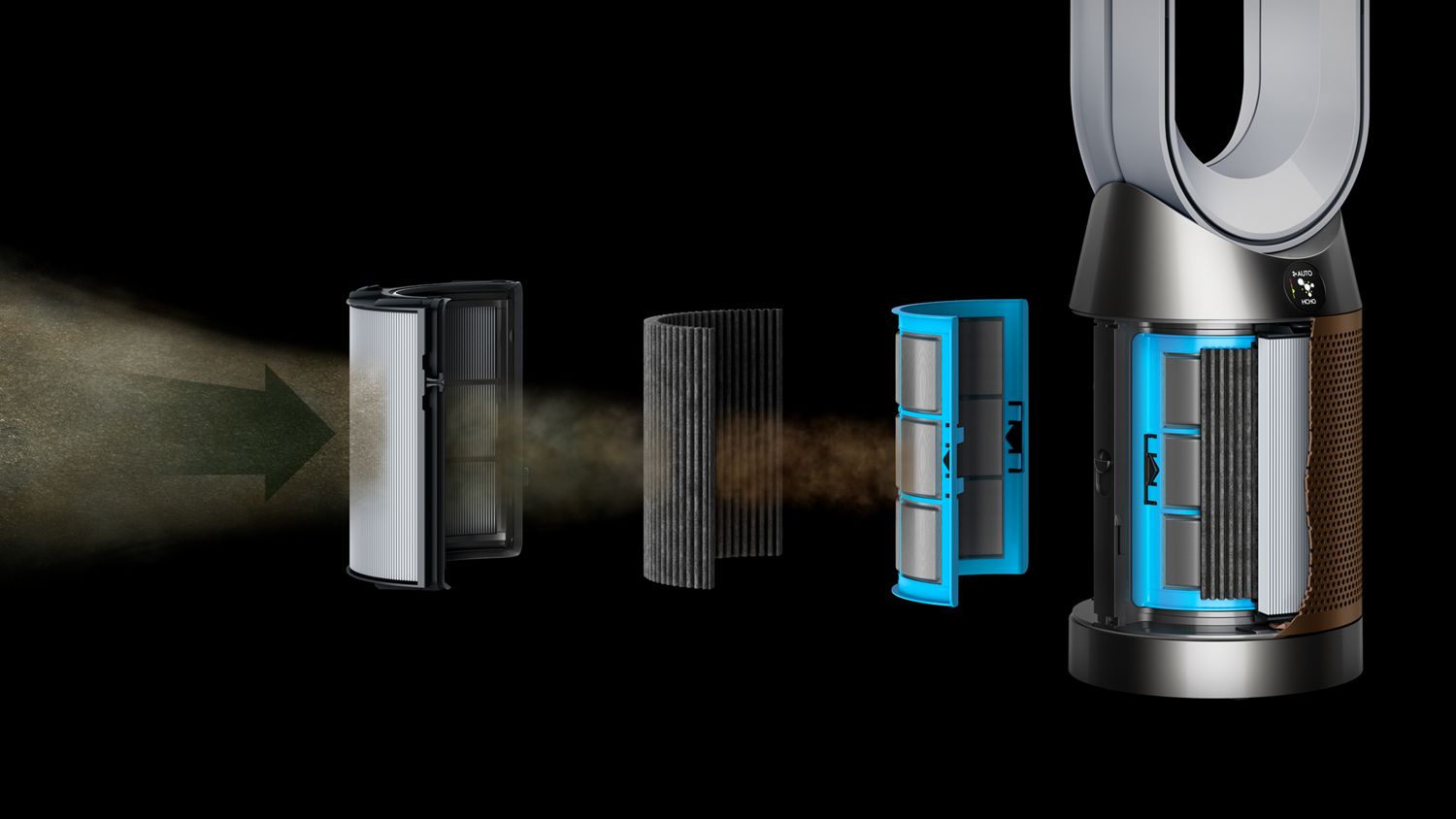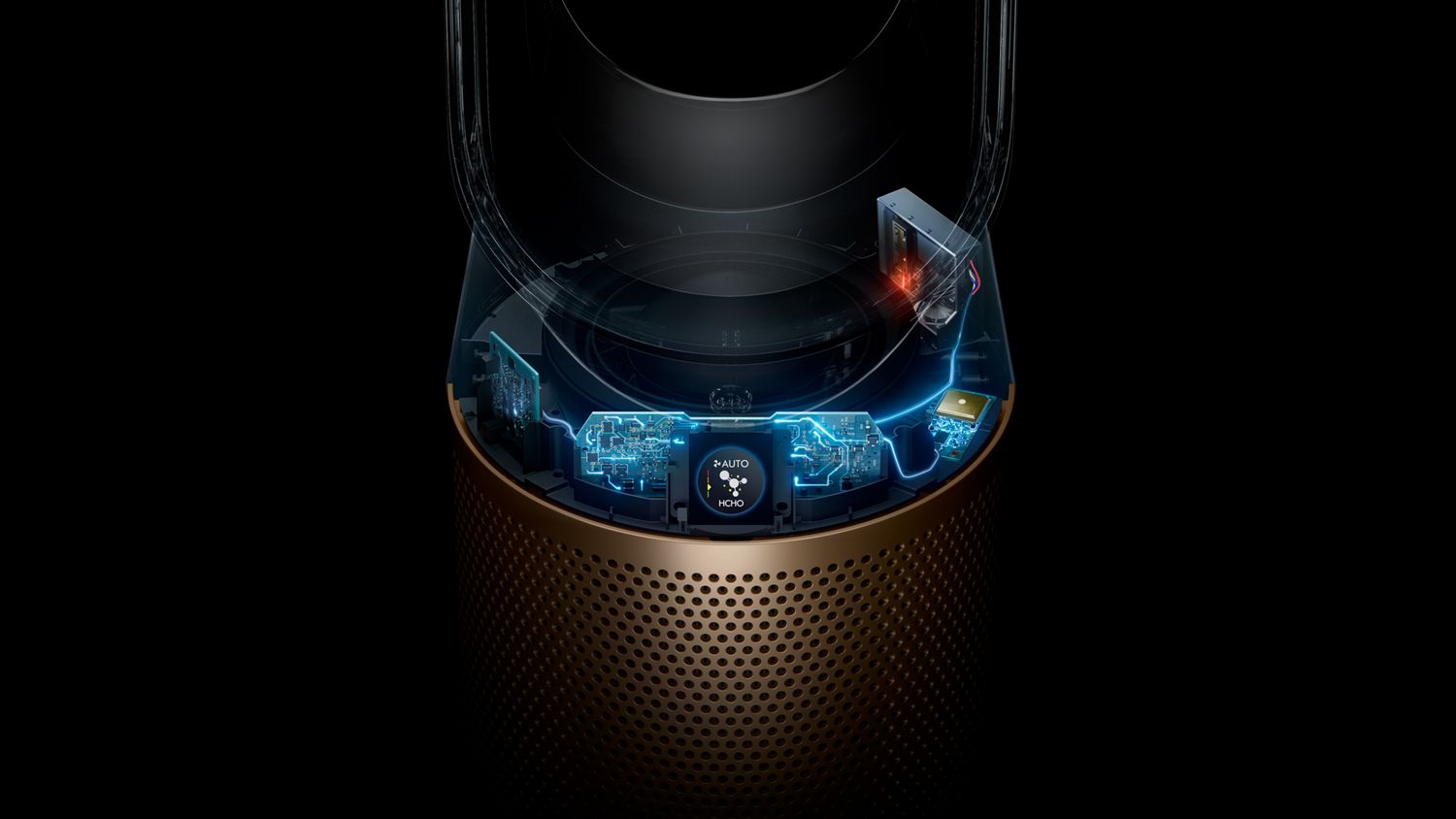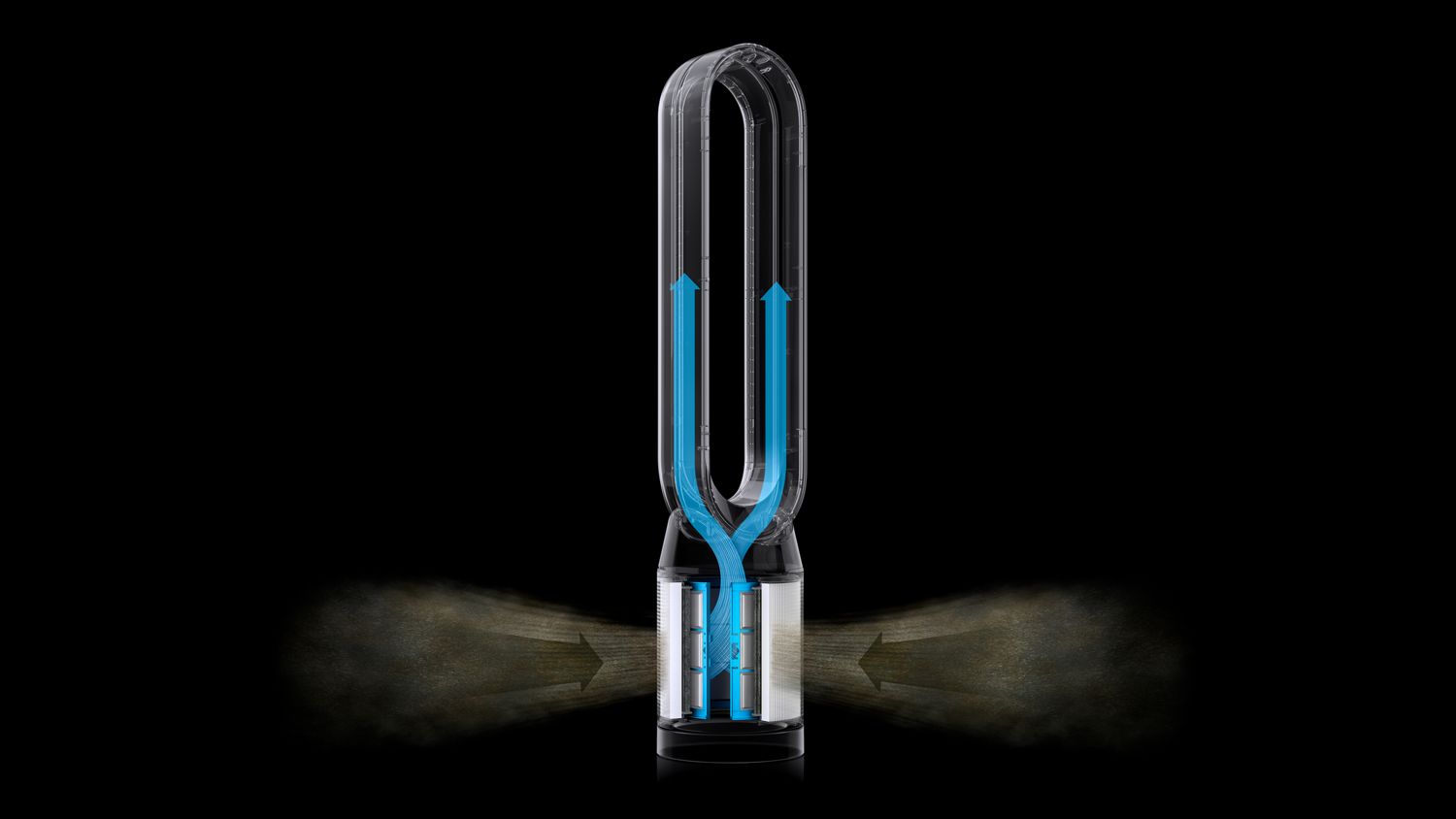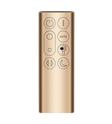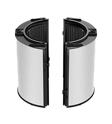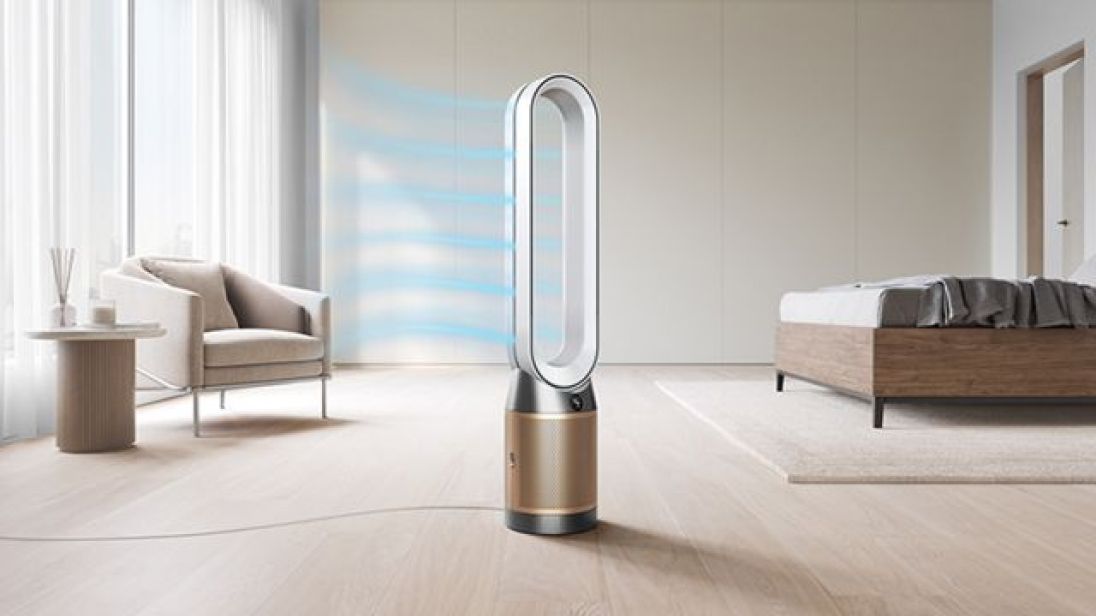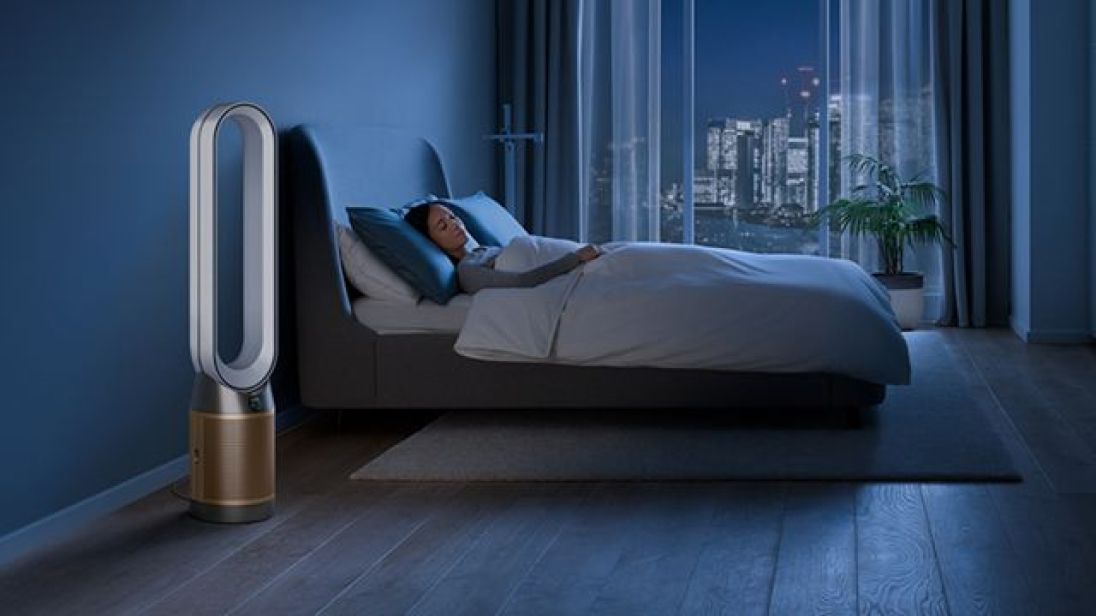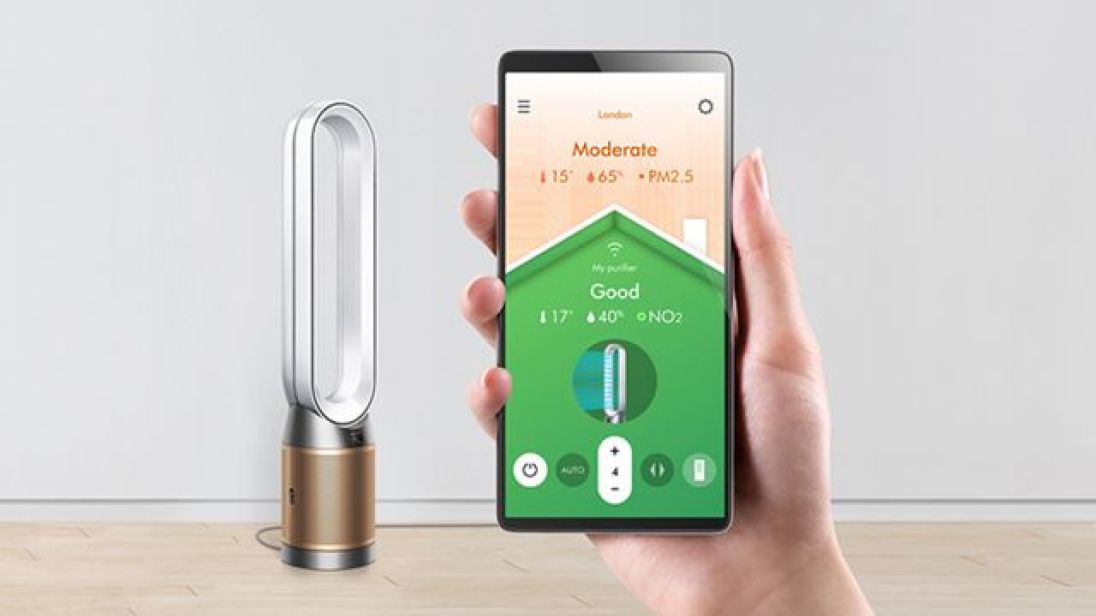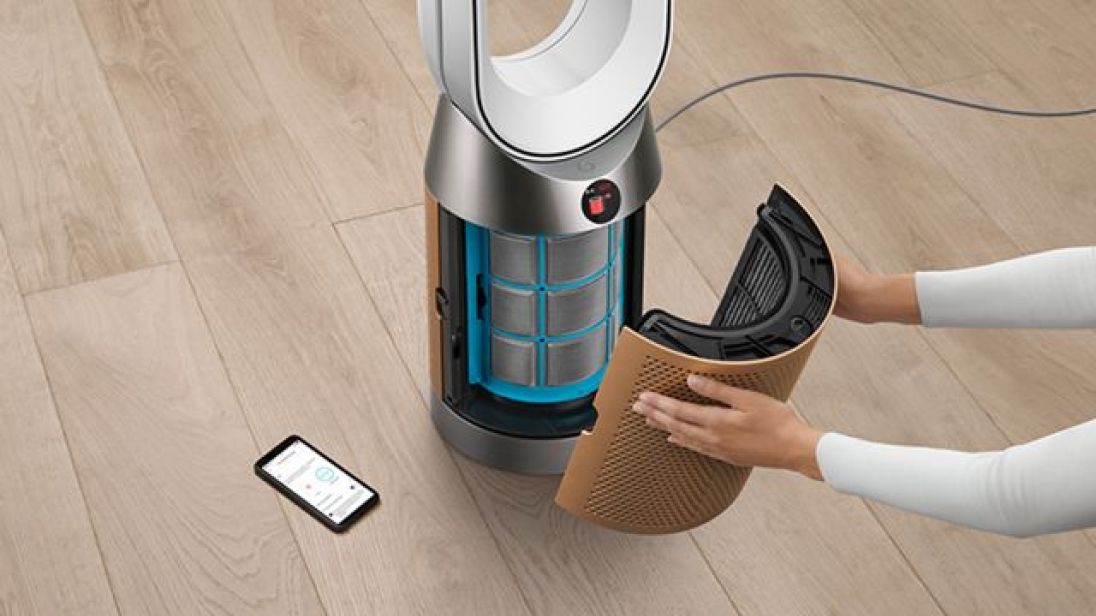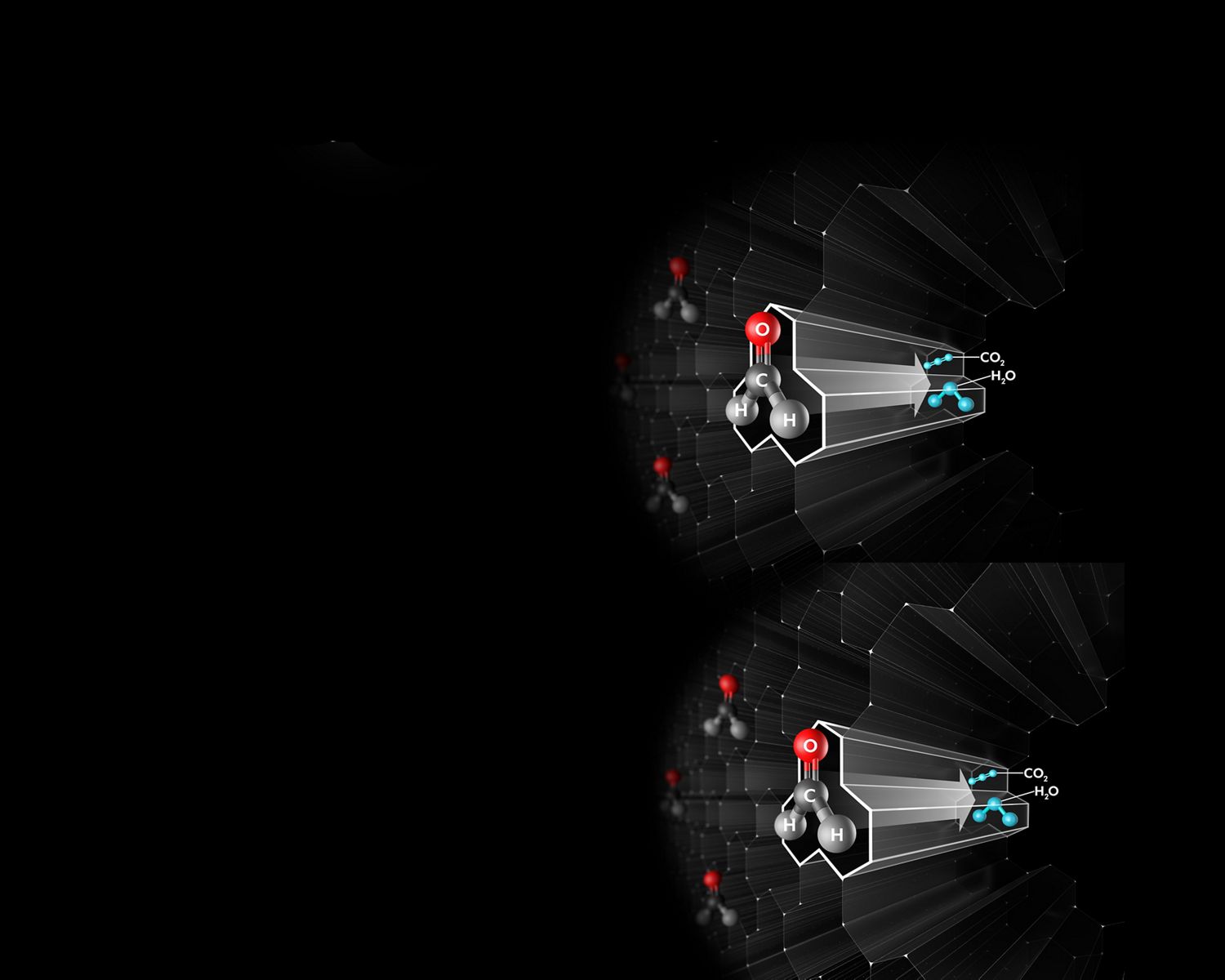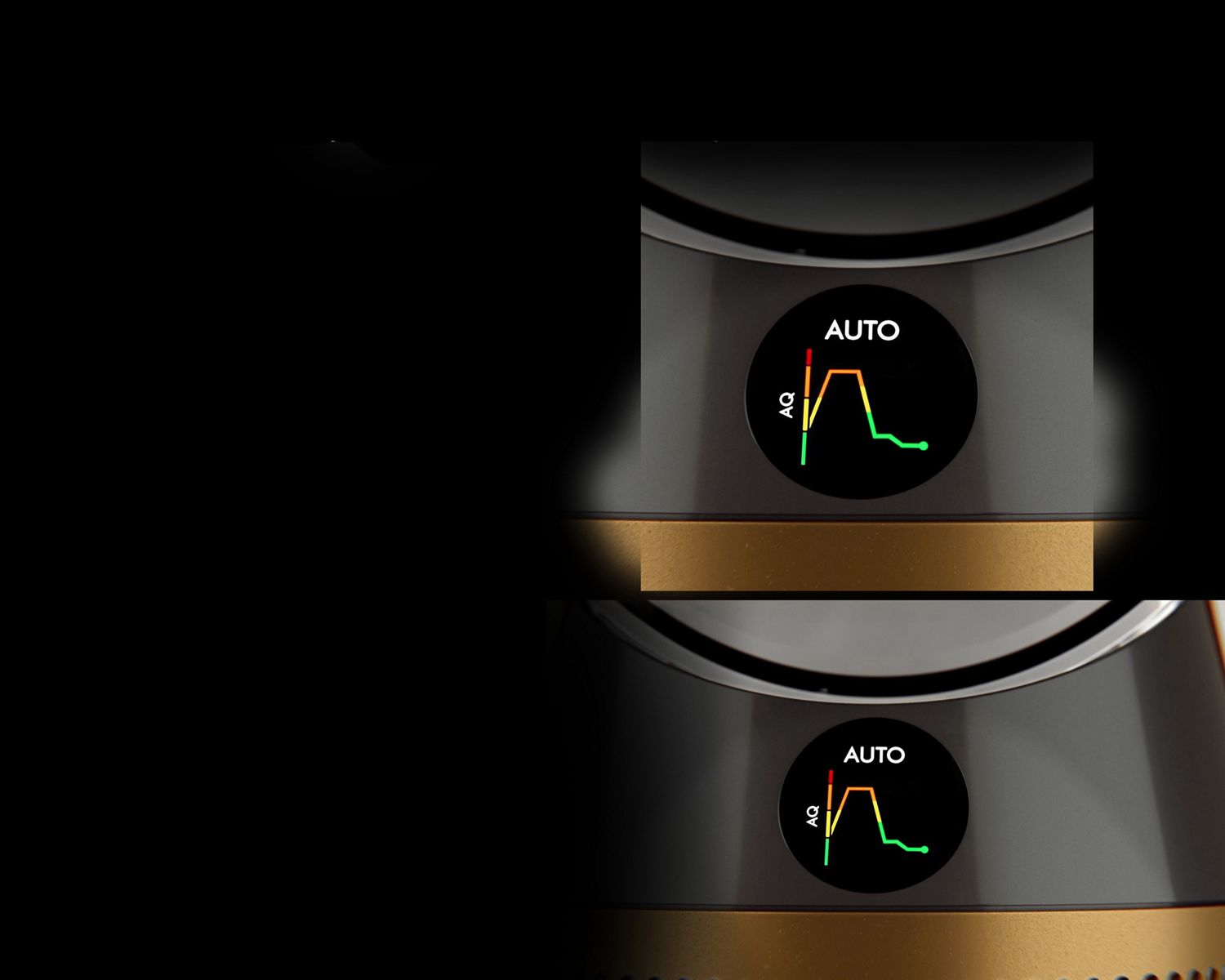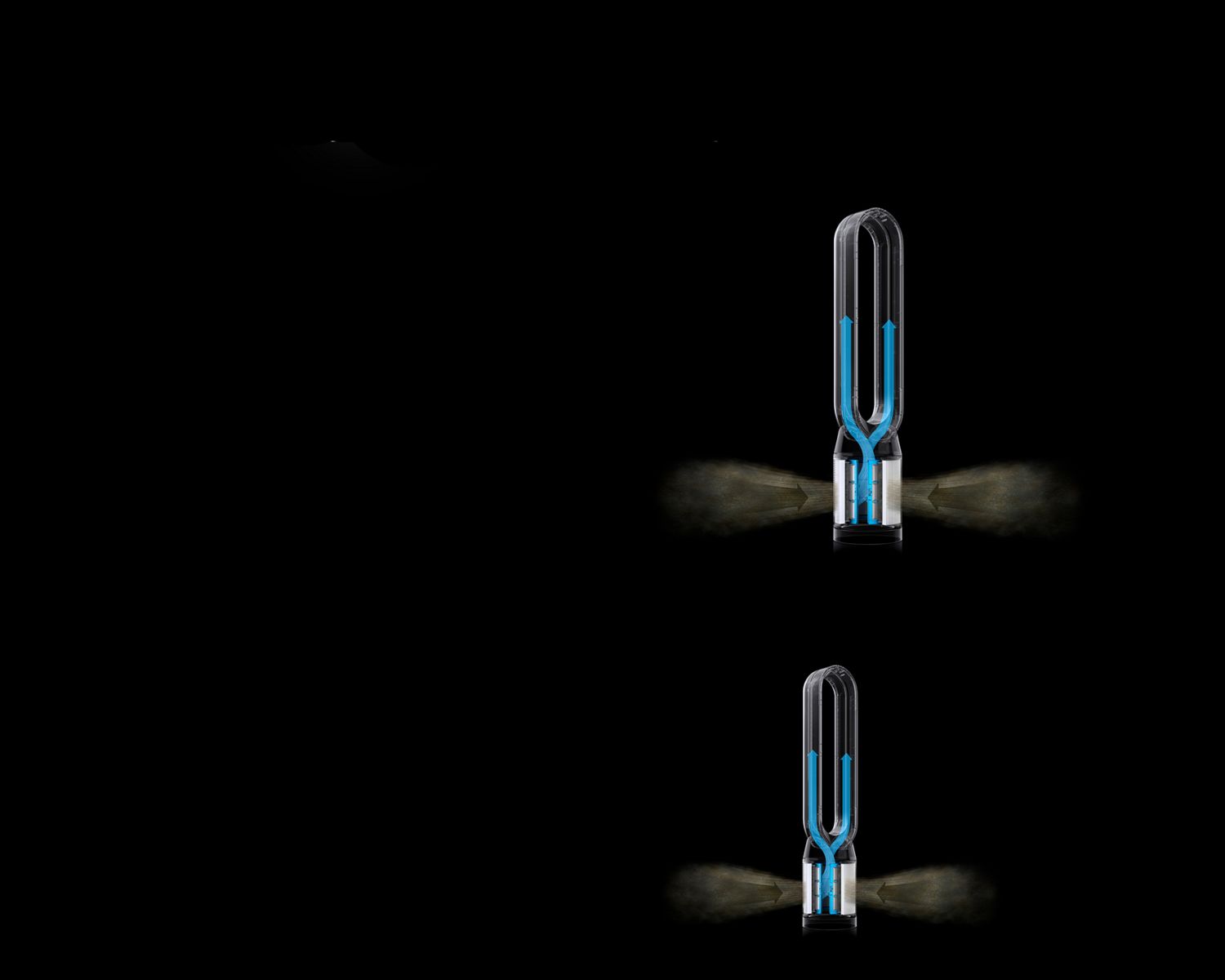

Dyson Purifier Cool Formaldehyde™ TP09 purifying fan (Nickel/Gold)
Purifies the whole room evenly.³ Cools you. Destroys formaldehyde. ¹
Connects to the MyDyson™ app.
Only at Dyson: Exclusive technology and Nickel/Gold colourway.
Canada’s #1 Most Trusted Air Purifier brand**
Free shipping
2-year warranty
Reviews powered by Bazaarvoice
Dyson Purifier Cool Formaldehyde TP09 (Nickel/Gold)
Overall rating
In the box
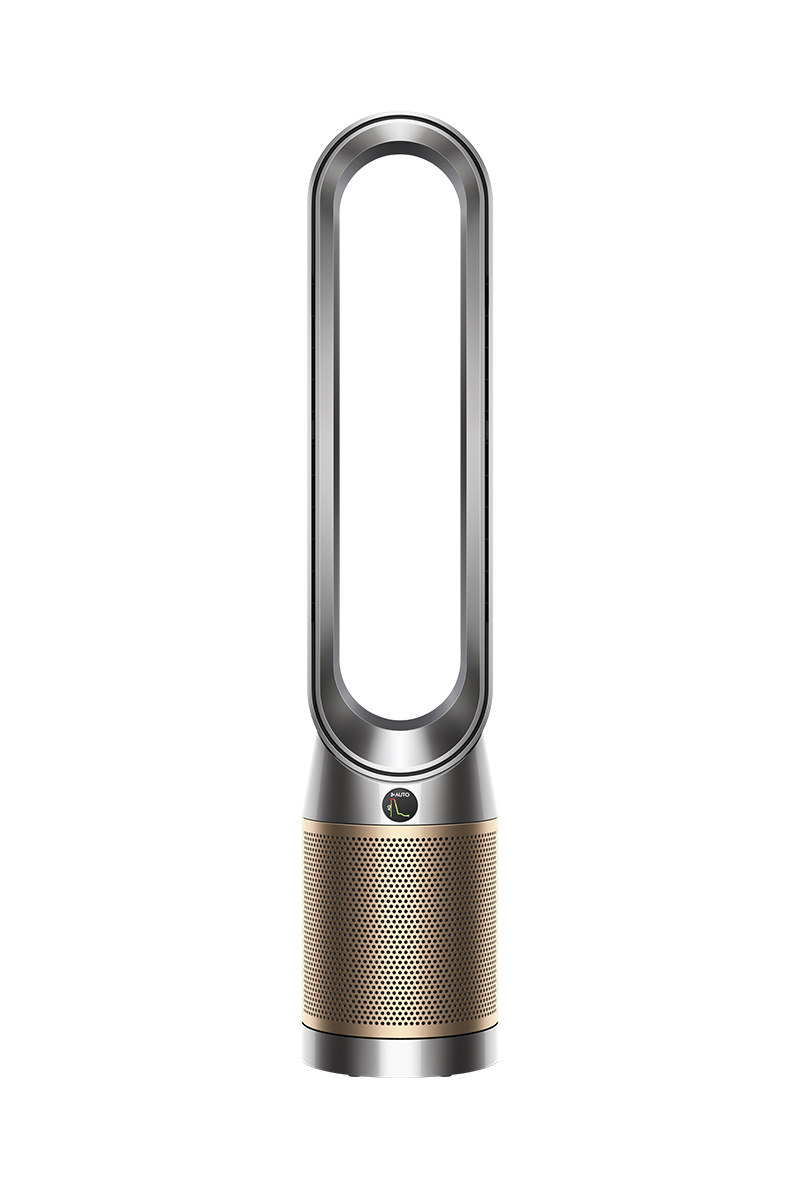
Dyson Purifier Cool Formaldehyde TP09 (Nickel/Gold)

Purifies the whole room evenly.³ Cools you in summer.
Projects over 290 litres of air per second for powerful, cooling airflow.
Key features
-
Diffused mode to purify without cooling you
Diverts airflow through the back of the machine. To purify the room, without feeling the airflow or cooling you.
-
Quiet, even at full power
Acoustically engineered to reduce turbulence, so it’s 20% quieter than the previous model. Perfect for night, or a peaceful working environment.
-
Smart technology
The MyDyson™ app lets you see which pollutants have been captured, set schedules and more. Control hands-free, using compatible voice services such as Amazon Alexa, Google Assistant or Siri.⁶
-
Easy maintenance
Changing the filter is quick and easy. The machine’s LCD screen and MyDyson™ app⁶ notifies you when it needs to be replaced.
Technology
Frequently asked questions
What's new about the Dyson Purifier range and how is it different to other purifiers?
Dyson engineers are perfectionists. Channeling our relentless dissatisfaction, we have re-engineered our latest purifiers to be fully sealed to HEPA H13 standard.⁷ Two phases of purification sit within a fully-sealed filtration and airflow system to trap pollutants inside, preventing them from leaking back into the air you breathe.
What's different about the Dyson Purifier Formaldehyde range?
The Dyson Purifier Formaldehyde range has all of the capabilities found in our advanced purification products, but goes a step further to detect and destroy formaldehyde.² An added solid-state sensor precisely detects formaldehyde, while our catalytic filter breaks it down into two safer molecules – carbon dioxide and water.
What is formaldehyde, and where does it come from?
Formaldehyde is a polluting gas formed of carbon, hydrogen, and oxygen that is commonly found in homes. Sources of formaldehyde in your home could include paint and varnishes, air fresheners, mattresses, furniture, household cleaners, carpets, particleboard and plywood, electronics, dryer sheets, nail polish remover, moth balls, toys, fireplaces, and wood burning stoves.
HEPA grades refer to filter efficiency at a certain particle size. HEPA H13 is a filter with a 99.95% removal efficiency of particles down to 0.1 microns per litre of air. This includes common pollutants such as allergens, bacteria, viruses, pollen, and mould spores.
How often should I replace my filter?
We recommend replacing the HEPA+Carbon filter roughly every 12 months, depending on how often you use it. That’s because over time filters can become clogged with pollutants and even let unpleasant odors back into the room. The machine will alert you when it’s time to change filters. A filter life reading can be found on the LCD screen and via the myDyson app.⁵ The catalytic filter never needs replacing.
What is the cooling functionality of TP09? Is it an air conditioner?
The Dyson Purifier Cool Formaldehyde is both an air purifier and a powerful cooling fan. The machine uses Dyson Air Multiplier™ technology to project a powerful stream of high-velocity, purified air to cool you down quickly.
Do Dyson purifiers capture wildfire smoke?
Yes, Dyson purifiers capture wildfire smoke and other combustion pollutants.
¹ Third party full machine testing based on GB/T 18801-2022 formaldehyde cumulative clean mass testing with continuous injection until plateau of formaldehyde CADR is achieved. Results may vary in practice.
² Gas capture rates may vary.
³ In maximum setting. Tested for air projection, purification coverage in a 2860ft³ room.
⁶ Refer to the MyDyson app for compatible voice services.
* Dyson purifiers were challenged with airborne influenza A (H1N1 virus), MS2 bacteriophage at an independent lab, using a 30 m3 chamber. After 60 minutes at maximum fan speed, the airborne concentration in the chamber was reduced up to 99.9 %. Real-life efficacy may vary.
**Voted most trusted Air Purifier brand by Canadian shoppers based on the 2025 BrandSpark® Canadian Trust Study.

